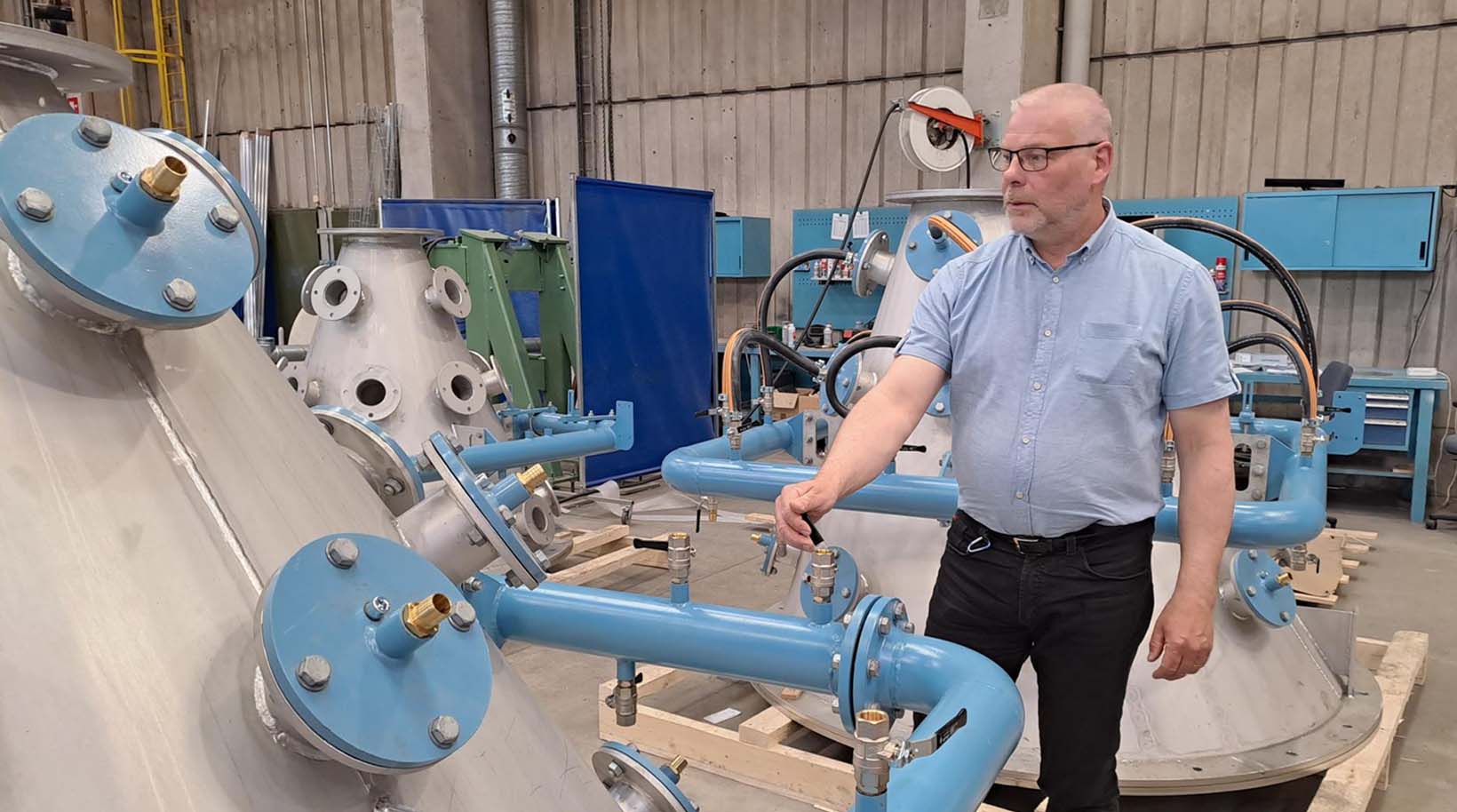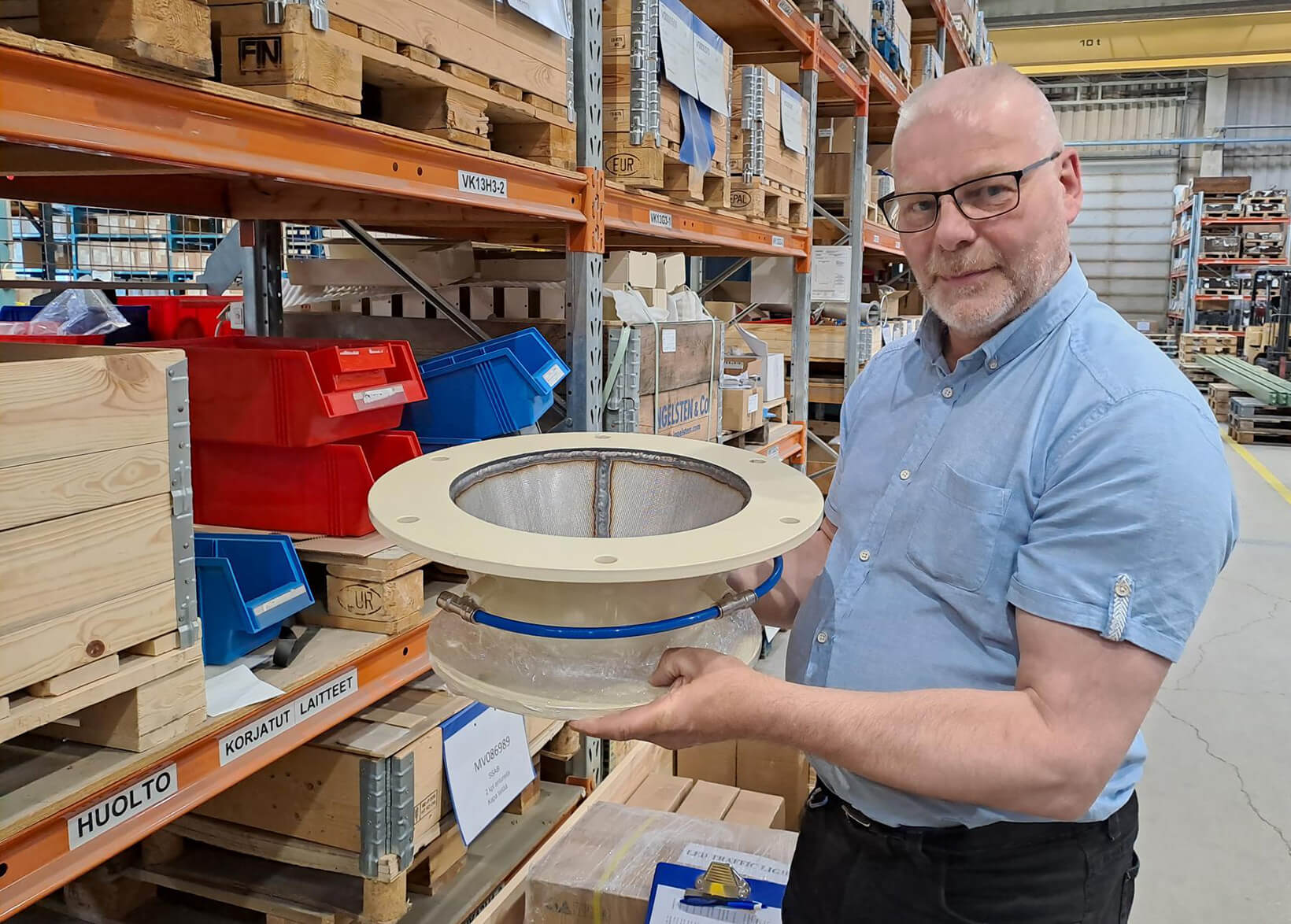Fluid technology for efficient production
Larger plant or system deliveries typically involve receiving, transferring, and loading bulk materials. Tamtron has developed its competitive technology for these areas, which can be supplied to sites without weighing.
Bulk material is often loaded using screws from the bottom of the silo. Instead, Tamron offers a material transfer method based on fluidizing fine bulk material. A small amount of dry, low-pressure air is passed through the fluidizing elements at the bottom of the silo cone to the silo-material interface.
Users of systems supplied by Tamtron include cement plants, fly ash handling processes in power plants, and mortar and chemical plants.
The benefits of fluid technology:
- Increased efficiency of the production process.
- Environmental friendliness: no motors, so significantly less energy is consumed.
- Fluid hose allows the bypassing of fixed obstacles (e.g. load-bearing structures).
- It is also possible to quickly build new technology into an old process.
- Fluid technology ensures that fine material can be moved easily and quickly.
- Fluid elements and fluid hoses require almost no maintenance.
Fluidization is an energy-efficient method
With expert design and implementation, fluidic equipment enables bulk material to be moved by gravity in a fluid-like manner. As there are no motors, energy consumption is significantly reduced, and the efficiency of the production process is increased.
Fluidization can also be used to move fluidizable bulk material inside a rubber hose by gravity. A small amount of dry, low-pressure air is introduced from the bottom of the hose at the material-hose interface, causing the material to flow through the hose at angles of inclination as low as 3-6 degrees.
Low maintenance requirements for fluid elements and fluid hoses
Using fluidization technology, the maintenance requirements for fluid elements or fluid hoses are practically negligible. There is virtually no material consumption for equipment and components. Industrial plants in Finland and worldwide, where fluidization technology has been used for over twenty years, are still in operation.
A flexible fluid hose bypasses fixed obstacles such as load-bearing structures. This also allows new technology to be built smoothly into an old process.

Expert Jari Haraholma takes a look at the fluid cones in production. They will be supplied to the mining company for the ore dressing processes.
Fluidic components allow material to be discharged evenly from the silo
Funnel flow, vaulting and the accumulation of significant material residues in the conical part of the silo are problems that often occur when discharging or dosing powdery materials from the silo. However, these can be avoided by proper fluidization. Fluid components (fluid plates and cones) restore the fluidity of the material by introducing air that has been removed from the packed material. This results in a uniform discharge of the material out of the silo.
Compared to conventional fluidic components, the components developed by Tamtron allow the material to be fluidized in the silo constantly and constantly until the silo is emptied, regardless of the filling level of the silo.
Efficient and energy-friendly fluidization system
The fluidization components can also be easily installed in an existing silo or tank. Tamtron’s fluidization system facilitates material flow and produces a smooth and controlled silo discharge. The system is activated only seconds before the silo discharge or dosing starts. Compressed air is only introduced into the silo for the duration of the operation. Compressed air consumption in the process is deficient, as only the amount of air removed from the material during compaction is required.
Fluid plates and cones in standard sizes or made to measure
Fluid plates are available in two models, FLC and FLA. Both are available in lengths of 300, 600 and 900 mm. By installing the different types and sizes of plates one after the other, the entire length of the silo cone can be covered with fluid plates.
Type FLA fluid cones are also available in six standard sizes from D80/200 to D250/400. Fluid components can also be made to measure.





